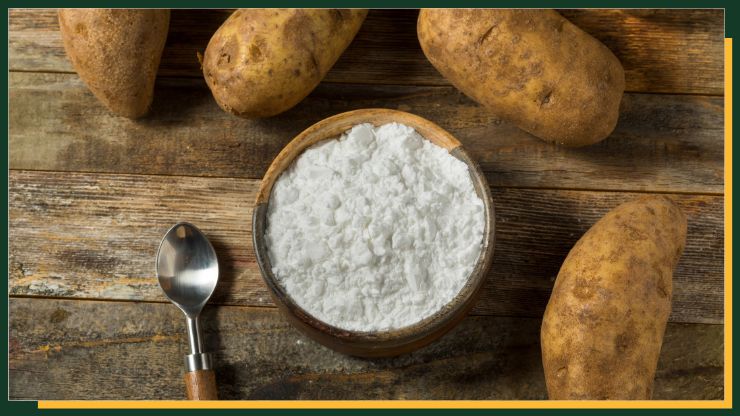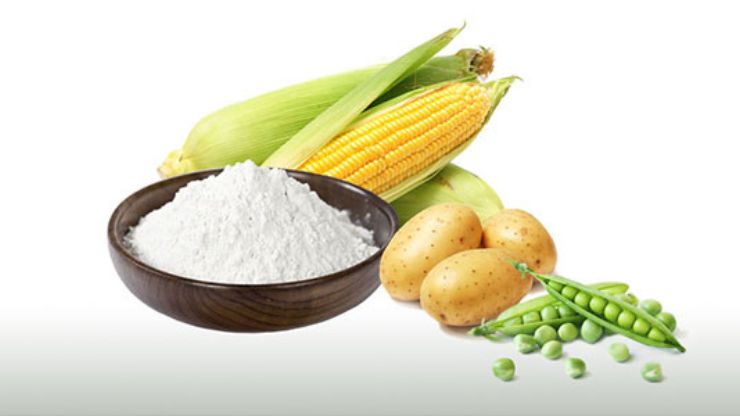Modified Food Starch is a crucial ingredient in numerous processed foods, celebrated for its multifunctional properties. Derived from natural sources like corn, wheat, or potatoes, this starch undergoes a variety of modifications to enhance its functionality.
This article aims to demystify the concept of modified food starch, exploring its fundamental nature, diverse forms, and wide-ranging applications in the food industry.
By examining the methods of modification, its types, uses, and regulatory aspects, this discussion will shed light on the benefits and potential drawbacks of this ingredient.
Understanding the significance of modified food starch offers insights into its pivotal role in food production and its impact on the final products available to consumers.
Table of Contents
ToggleWhat is Starch?
Starch is a complex carbohydrate and one of the most abundant organic compounds found in nature. It serves as a primary energy storage molecule in plants, where it is stored in various parts of the plant, such as seeds, roots, and tubers. Starch is also a fundamental component of the human diet, as it is a major source of dietary carbohydrates.
Starch is composed of long chains of glucose molecules linked together by glycosidic bonds. These glucose chains can be branched or linear, resulting in two main types of starch: amylose and amylopectin. Amylose consists of linear glucose chains, while amylopectin has a branched structure with numerous side chains.
Also, Read – Should I Avoid Artificial Food Coloring
Don't just scroll, subscribe!
BuzzTrail's unique web-stories are the cure for boredom you've been waiting for.
Modification of Starch

Starch modification involves altering the natural properties of starch to enhance its functionality in various industrial and food applications. There are several methods of modifying starch, each with distinct effects on its properties. These methods include:
- Physical Modification:
- Heat Treatment: Heating starch can alter its properties. Pre-gelatinization is a common method where starch is heated in the presence of moisture, causing the starch granules to swell and absorb water. This process makes the starch more soluble and easier to disperse in cold water, useful for instant applications.
- Extrusion: This mechanical process involves pushing starch through a narrow opening at high pressure and temperature. It changes the physical structure of starch, impacting its viscosity and other functional properties.
- Chemical Modification:
- Cross-Linking: Chemicals or enzymes are used to create covalent bonds between starch molecules. This process alters the texture, stability, and tolerance to heat and shear forces.
- Esterification: Introduction of ester groups to the starch molecule, often with acids or anhydrides, which can modify its solubility and behavior in different conditions.
- Etherification: Involves the introduction of ether groups, changing the starch’s properties such as solubility, viscosity, and stability.
- Enzymatic Modification:
- Amylase Treatment: Enzymes like amylase can break down starch into simpler components like maltodextrins, altering its properties.
- Transglucosidase Treatment: This enzyme modifies the starch molecules by transferring glucose units within the starch chains.
These modifications can result in various types of modified starches, each with unique characteristics and applications. They are used in the food industry for thickening, stabilizing, binding, and providing texture in a wide array of products.
Also, Read – Should We Worry About Food Additives
Types of Modified Food Starch
Modified food starch comes in various forms, each tailored to specific applications in the food industry. Here are some common types of modified food starch:
- Pre-gelatinized Starch:
- This starch has been pre-cooked and then dried. It dissolves readily in cold or hot water and is often used as a thickening agent in instant soups, gravies, and puddings.
- Acid-Thinned Starch:
- Starch is chemically modified with acid to reduce its viscosity. It is used in salad dressings, fruit fillings, and other applications where a less viscous consistency is desired.
- Cross-Linked Starch:
- Cross-linking involves the formation of covalent bonds between starch molecules, creating a more heat-stable and shear-resistant starch. It is used in high-temperature processes, like canned soups and sauces.
- Acetylated Starch:
- Acetylation introduces acetyl groups to the starch molecule, resulting in improved stability and resistance to shear and high temperatures. It is commonly used in frozen foods, dairy products, and bakery fillings.
- Oxidized Starch:
- Starch is modified through oxidation, improving its thickening properties and stability in acidic conditions. It is used in applications like salad dressings, canned foods, and pie fillings.
- Hydroxypropylated Starch:
- This modification introduces hydroxypropyl groups to the starch, enhancing its solubility, thickening ability, and freeze-thaw stability. It is used in frozen desserts, sauces, and instant foods.
- Esterified Starch:
- Esterification introduces ester groups to the starch molecule, improving its cold-water solubility and stability. It is used in applications like instant puddings, pie fillings, and salad dressings.
- Resistant Starch:
- This type of modified starch is designed to resist digestion in the small intestine, acting as dietary fiber. It can have health benefits and is used in products like high-fiber bread and cereals.
- Specialty Starches:
- These are starches that undergo unique modifications to meet specific industry needs. They can include waxy starches, organic starches, and starches with specific functional properties tailored to a particular application.
Applications of Modified Food Starch
Modified food starches find extensive use in the food industry due to their versatile properties. Here are some common applications of modified food starch:
- Thickening Agent:
- Modified food starches are used to increase the viscosity and thickness of food products. They are employed in soups, sauces, gravies, and salad dressings to achieve the desired consistency.
- Stabilizer:
- These starches help maintain the stability and uniformity of food products, preventing separation or settling. They are added to products like canned soups, dairy products, and frozen desserts.
- Texture Enhancer:
- Modified starches can improve the texture of food items. They are used in processed meats, bakery fillings, and ready-to-eat meals to create the desired mouthfeel.
- Binder:
- They serve as binders in food applications to hold ingredients together, such as in meat products, batter coatings, and fillings for pies and pastries.
- Gluten-Free Alternatives:
- Modified starches are often used in gluten-free food products to replicate the structure and texture that gluten provides in traditional baked goods like bread, cakes, and cookies.
- Shelf-Life Extension:
- In some cases, modified starches can help extend the shelf life of certain food items by controlling moisture levels and preventing moisture migration in products like bakery goods and snacks.
Conclusion
In conclusion, modified food starch plays a pivotal role in the food industry, offering diverse applications and enhancing the quality and consistency of processed foods. While it provides essential functionality and addresses specific dietary needs, its use should be balanced with considerations for nutritional impact, clean label trends, and allergen concerns.
As the industry evolves, striking the right balance between functionality and consumer preferences remains a key challenge, making the responsible and informed use of modified food starch a critical aspect of modern food production.
FAQs
What is modified food starch?
What is modified food starch?
Modified food starch is a starch derivative that has undergone physical, chemical, or enzymatic modifications to improve its functional properties in various food applications.
Why is food starch modified?
Why is food starch modified?
Starch is modified to enhance its characteristics, such as stability, texture, thickening ability, and solubility, making it more suitable for specific food processing and formulation needs.
What are the common methods of starch modification?
What are the common methods of starch modification?
Common methods include physical modification (e.g., pre-gelatinization), chemical modification (e.g., cross-linking), and enzymatic modification (e.g., amylase treatment).

